Confidence Project Takeaway 3: Aligning Your Principles and Values
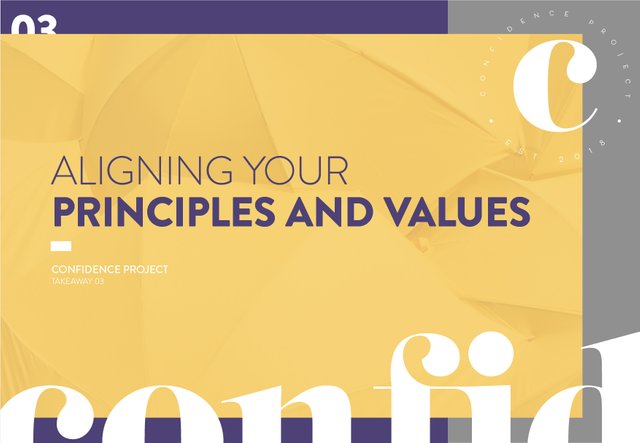
Hey everyone!
It’s been a long time since we checked up on you guys. In behalf of the team, I humbly apologize for not being able to deliver on our promise of posting our takeaways on time. As what Jay (@jsmalila), the host of Takeaway 2, had said
“Life happened.”
So here we are picking up right where we left off.
What's with the new look?
We are now on the third takeaway of the Confidence Project. You may have noticed that we shed new skin and what this means for us is that we have thoroughly defined our project’s personality and we incorporated it to our brand. All credits go to the legendary @legendarryll! Thank you so much for transforming our brand's identity from words to a wonderful work of art. We owe you so much (please let us send you SBD). Now where was I, oh here - we may have a new look but it doesn’t mean that we will be shifting our course. We will still be giving you a sound approach towards building your confidence. Jay talked more about the relaunching of the project here: Confidence Project: The Relaunch.
Why are your Takeaways soooooo long?
We know that the Takeaways aren’t the read-in-one-sitting type and we have designed it like so because we want you to be immersed deeply in it. Citing a line from Dr. Cal Newport’s highly acclaimed book “Deep Work,”
"Human beings, it seems, are at their best when immersed deeply in something challenging."
The work that we put in in crafting each takeaway should be justified by the impact that it will have impressed on you. In this attention economy, we take the risky but rewarding route of producing attention-demanding content because we are aiming to grow a community of deep and effective learners.
In other words, sweetie we don’t want you to have the attention span of a goldfish. We know that Confidence Project participants are smart individuals who wish to better themselves to reach their fullest potentials.
I'm new, what'd I miss?
To those of you who are new, you are in luck because I will be walking you through what went on in the last couple of months, so sit back and stretch your cognitive muscles because this is going to be quite long.
Let’s start our review with the Confidence Project Manifesto. We introduced the concept that confidence isn’t something that only a few were privileged to have. It’s in all of us. We can learn to build it up so that it can help us later on. We determined that confidence can actually be seen as the certainty that one has over one’s skills. We further determined that this certainty can be achieved or increased when one exposes one’s self to deliberate practice. When one is deliberately practicing a skill for a long period of time, one gets good at it. He then can translate this as an assessment of his skills. In short, being confident is saying things like you mean them. And to mean them, it should be based on an accurate view of your skills.
“I am good in Math,” can be said in a way that it embodies reality. You have your test scores to back your claim up, you spend an hour consistently doing your homework everyday and you got a reward for being the top scorer in your math exam. In a no nonsense kind of way, you’re not saying it to brag. You’re saying it like it is. We wish to build that kind of confidence in us.
The Confidence Project Team thought that the way to do this is to gather studies about confidence and summing up our findings in monthly posts we call Takeaways. To ensure that the deliberate practice is done, we also design challenges that will urge you to apply all of our findings in real life. To add a little excitement in our journey to confidence, we shell out SBD rewards for Steemian participants and funds from our pockets for prizes to be given to our outside Steemit participants that we think will serve as instruments that will motivate you to apply the project challenges in your own life.
Wait, what? What does your team get in return?
With us doing all the hard work and shelling out our money, you ask “What do you get in return?” Good question. We are, in no way, martyrs. There is something in this for us. We wish to build our own confidences up too. We figured that in this endeavor, three passionate individuals aren’t enough to make a significant change. We realized that the more heads we place in this, the more we will be urged to give it all that we’ve got. In a way, you guys keep us in check. Since we will not be serving our own selves only, but you, as well. Comments and suggestions are highly appreciated! Don't hesitate to reach out to us at [email protected].
What was Takeaway 1 about?
Takeaway 1 talked about identifying our area of focus. We did so because we discovered that there are essentially two classifications of confidence. One was general and the other was specific. Given that we only have a limited amount of time to host this project, we realized that we can focus on improving our specific self-confidence first. As it had been mentioned that the greater our specific self-confidence is in one thing, the higher the chances our general self-confidence will follow. We urged our participants to determine their areas of focus and write down actionable items that will enable them to strengthen their areas of focus.
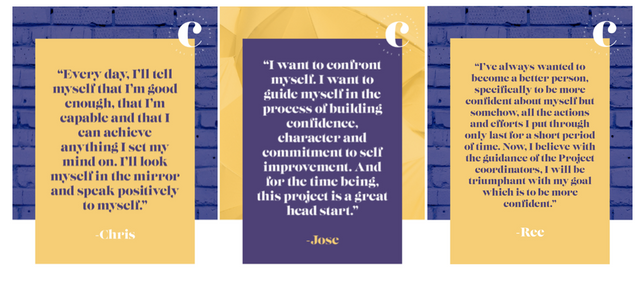
Confidence Project Participants (quoted with permission).
What about Takeaway 2?
The second takeaway focused on establishing our motivations. It expounded on the relationship between confidence and motivation. It further emphasized that we need the two types of motivations to allow us to move forward with our goals. Apart from the well-known focus on our growth which is our intrinsic motivation, we have to also attach external rewards which refers to our extrinsic motivation because we’re not always that inspired to look at our growth all the time. The challenge urged the participants to identify their intrinsic and extrinsic motivators.
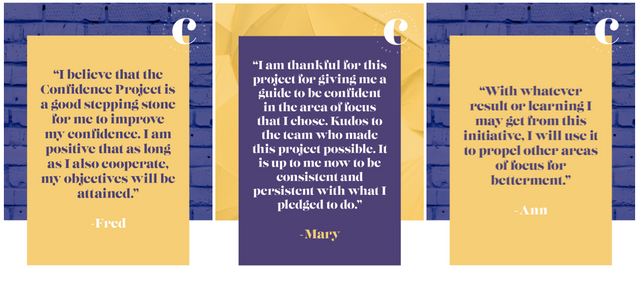
Confidence Project Participants (quoted with permission).
I'm ready for Takeaway 3, hit me!
After identifying our area of focus and establishing our motivation, we rationalized that the next takeaway should lock the "self" aspect in place. As we mentioned in the Confidence Project Manifesto, our project was to be done in four dimensions:
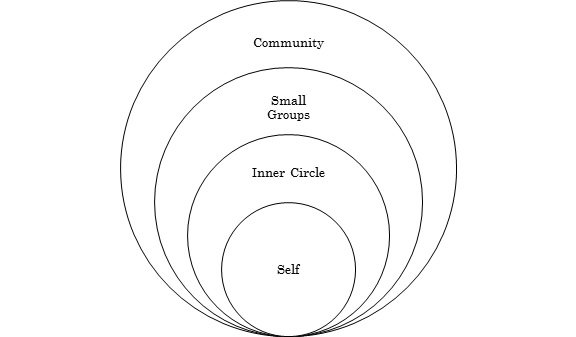
Confidence Project's Four Dimensional Approach.
We thought that in order to close the "self" aspect, there is a need to make the third takeaway with this closure in mind. After we've identified our focus, established our motivations, what's next? After deliberation and doing some readings, we can factor in elements that are closely tied to our motivations - our principles and values.
Jay mentioned about our motivation coming from our values. In actuality, your intrinsic and extrinsic motivations give you a clue about the principles and values that you hold in your life. Whether you are actually aware of them or not, working on this project, or in any endeavor for that matter, becomes more rooted in purpose when aligned with the principles and values that you've currently held or want to hold in your life.
Principles and Values
These two words are often used interchangeably, but in a stricter sense, they are different. Author of the best-seller "Seven Habits of Highly Effective People" Stephen Covey mentioned that principles are
"...natural laws that are impersonal, factual, objective and self-evident."
Furthermore, in terms of durability, they are fundamental and enduring. An example of a principle would be the principle of gravity.
Values according to Stephen Covey, on the other hand, are
"...social norms which are personal, emotional, subjective and arguable."
He even goes on to add that even criminals have values. Values can be constant but can emerge and evolve over time with varying conditions. Examples of values are transparency and openness.
Confidence and Our Principles and Values
Now you may ask what roles our principles and values play in building up our confidence. I personally think that incorporating our principles and values in our journey to confidence is, in a way, working with ourselves. I am a believer of the notion that when we work with ourselves, things will go easier for us. What I mean by this is - it will be easier for you to commit to a strict diet if you value health and fitness as compared to when you value indulgence.
What principles and values do we incorporate in our lives then? Principles that have greater impacts in our lives are those that were made evident when we were still children. Although we can say that all principles can affect us because they are fundamental truths or constraints, those that we have incorporated in our lives are those that have made impacts on us when we were still children. As an illustration, we can take the principle of inequality to light.
When Nate was a young boy, he noticed that his classmate had a really cool talent for singing. Nate tried to sing as good as his classmate did, but he didn't have the natural gift. As praises were given to Nate's classmate for his great rendition of a song in their class' talent showcase, he realized that he needed to practice much harder than his classmate did to get as good as him. He then placed value on hard work. It happened upon the perception of the principle of inequality - resources, in this case Nate's classmate's singing talent genes, are scarce and distributed unevenly.
This is not the only way that values are incorporated in our lives, by the way. Other mechanisms in which values described by Morris Massey will be discussed in the following text.
Values Development
Sociologist and marketing professor Morris Massey has described three major periods of values development. Through the writings of Tad James, these are:
The Imprint Period
This period covers birth to age 7. At this stage, we are often described as 'sponge-like' in that we learn and store everything that happens in our environment. Specifically, our basic programming occurs between ages 2 to 4. Complete programming may have already occurred by the time we are aged 4. It is important to note that all beliefs here were unconsciously picked up from our parents.
The Modeling Period
This period ranges from ages 8 to 13. We begin to consciously and unconsciously model basic behaviors. We may start dressing like our parents. In the imprint period, the child is mostly unaware of any difference between the parents and himself. In other words, the child experiences no different from his parents' experiences. At age 8, we start to notice people outside ourselves. At age 13, we look at the happenings in the world. We model the behavior of our friends and family. As children of this stage, we develop heroes. We adapt to the values of the people we determined as heroes. Massey views that our values are "...based on where we were and what was happening in the world when we were 10."
The Socialization Period
This period spans from age 14 to 21. We begin our social interaction with other human beings. We learn about relationships and social values. Most of our values are just about complete at this stage in our life, specifically at age 21.
Moreover, core values do not change at this point unless a significant emotional experience or therapeutic change is done. This is in contrast to more conscious values which will change and evolve continually. These basic core values which were formed at age 10 are locked in at age 21. In this stage our peers have large influence over us, especially people who seem more like us. Other influences that may have influence over us include media especially those parts that seem to identify with the values of our peer groups.
Values can then come from principles and our upbringing. With these in mind, we can now easily identify the values that we have incorporated in this confidence-building journey.
Means and End Values
In order to get to the bottom of why we want to stay in the project we saw the need to go to the primary causes of such. In our readings, we came to know that the reason why we do the things we do is because we want to feel a certain way. Think about it. What are the things that you value most in life? Is it your well-being? Your sense of vocation? Your family? Your advocacy to end poverty? You think that these will have to be achieved in order for you to be happy and fulfilled. You're thinking that these will lead you to the feelings that you most want in your life.
Means values
These values called such because they are the means by which you are pursuing your goals. They are instrumental values that are done as part of the effort to achieve other values. As per Burton and Platts, they are
...the grown-up version of your need to satisfy your inner child's wanting to feel a certain way.
Ends values
On the other hand, ends values are the ways in which you want to feel. They are more general and more important in the eyes of the groups who are doing the valuing
Examples
(taken from Building Confidence for Dummies)
Dave is a married man whose first means value is his family. He was able to determine this by answering the question, "What is the most important to me in my life?" Afterwhich, he asked himself another question. "If I have this, what does it give me?" to which he replied, "A reason to get up in the morning to provide for them." He continued this line of questioning with, "And what will that give me?" His reply was "A reason for being active and powerful in the world." He went on with questioning himself until he arrived at the basic emotion or feeling that he had been meaning to achieve. In this case, he came down to 'self-respect.'
(from a personal acquaintance)
Joel is an artist who places value in the work that he does. He used to play in a band. He said that when he played for his band they often sang to empty venues. “Would it have been better to share the experience with a receptive audience?” he asked himself. He’d answer in the affirmative but he realized that even if that weren’t so, the joy he felt in performing was still there.
In the light of confidence, it is important that we identify our means and ends values so that we can move forward more effectively. Upon identification of these, an alignment between your principles and values to your action items will serve as a "self-correcting" process with which you can adjust should there be a need to improve.
The difficult things that you've been pursuing in your life are just to help you feel a certain way.
Summing it all up
• Takeaway 3 is intended to lock up the "self" aspect of the Confidence Project. As such, it was designed to enable self-correction should the participant see the need to do so. The first three takeaways adapted an outside-in approach that went deeper into our own selves with each takeaway. Takeaway 1 was instructional, takeaway 2 dug up a bit of our reason for doing things and takeaway 3 incorporated our nature in the mix.
• Principles and values differ in that the former is based on fundamental truths and are objective while the latter can evolve and are subjective. There is a need to identify what our principles and values are so that we can make them work for us and not against us.
• It can be said that everything that we do in this project (means values) are geared towards making us feel a certain way (ends values).
Challenge me already!
Here it is:
Determine your areas of focus as discussed in Takeaway 1. You don't need to make a separate entry for it, you just have to determine these areas that you would like to focus on so that you can establish your motivation accordingly.
Clearly lay out your motivations behind the area/s of focus that you chose by classifying them as intrinsic and extrinsic as in Takeaway 2. You also don't have to make a separate entry for it, you just have to establish these so that you can derive your values later on.
Dissect your intrinsic and extrinsic motivators by asking this question, "Why is this important to me?" List your first few answers to this as your means values. Repeat this question until you come down to a basic feeling which shall be your ends values.
To help you in constructing the details of your entry, here is an example. As you can see, the presentation is a brief one. You are free to express your ideas without being conscious about the length of your explanation.
Area of Focus: Develop confidence in writing
Activities to Build an Accurate View of Skills:
• Writing in my journal everyday
• Creating posts in my blog at least once every week
• Read at least one book every month in order to gain a new perspective in different styles of writing
Motivations in Pursuing this Goal:
Intrinsic Motivations:
• I consider writing as a form of reflection. Every time I transform my feelings and ideas into words that I can understand, I get to recognize what these actually are. I consider this important because the more I get to be aware of my thoughts and emotions, the more I gain the wisdom that I need to succeed.
Extrinsic Motivations:
• I want to earn through this writing. Through Steemit, I can monetize every blog post I make and attend to my financial needs.
Values Derived From:
Intrinsic Motivators:
• It's clear that I value self-awareness. Why is this important to me? Because it gives me the wisdom that I need to succeed. Why is it important to succeed? Because it gives me a fulfilling feeling.
Extrinsic Motivators:
• It's clear that I value earning from honest work. Why is this important to me? Because it leads me to financial stability. Why is it important to be financially stable? Because it gives me a sense of security.
There are no wrong answers in this part. The most important thing here is for you to undergo the process of questioning in order to identify what your means and ends values are in achieving your confidence. This will then allow you to evaluate whether or not there is a need to re-evaluate your action items to be able to do them effectively.
Follow these steps and post your entries in your respective blogs:
Set the title to 'Confidence Project Entry 3: Aligning Your Principles and Values'
Present your entry for this takeaway
The main tag of this post should be #confidenceproject
Paste the link of your entries in the comments section so we can easily find you
Resteem this post to let others know about this challenge too
You can post your entries until June 30, 2018 and the winners will be announced in another post that I will be posting on July 2018. The winner/s will be receiving SBD rewards that this post will be getting.
Important notes
We have intended for Takeaway 3 to be a sort of self-correcting tool. It functions similar to a spirit level.
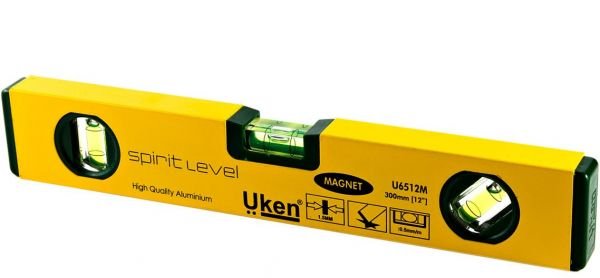
A spirit level is an instrument used to indicate if a surface is horizontal or vertical. Image taken from source.
At the end of the challenge of this takeaway, you will be able to come to the main causes of why you are partaking this journey to confidence in the first place. These causes should serve as guide for you to adjust your action items accordingly. Like the spirit level, this takeaway will enable you to see how aligned your principles and values are to your actions. You will get to see the inconsistencies, if any, that you need to sort through first before moving on with confidence effectively. We leave the handling of these inconsistencies to you, confident individual!
We have now closed the self aspect of our takeaways. Get ready to move up to the inner circle in the coming quarter.
References
Burton, K. & Platts, B. (2006). Building Confidence for Dummies. John Wiley & Sons, Ltd. Chichester, West Sussex.
Covey, S. R. (2004). The 7 Habits of Highly Effective People ([Rev. ed.].). New York: Free Press.
Means Values, Ends Values and Ultimate Values. Sociology Guide. Retrieved June 2018.
Values Development. Changing Minds. Retrieved June 2018.
Values and Personality Formation. Chandra Kant. Retrieved June 2018.
Growing in confidence with you,

Wow, this post is very comprehensive. I am so excited to join the 3rd takeaway. The new look looks really lovely!
Thanks Ree! Yeee! So excited to hear your progress on your area of focus :)